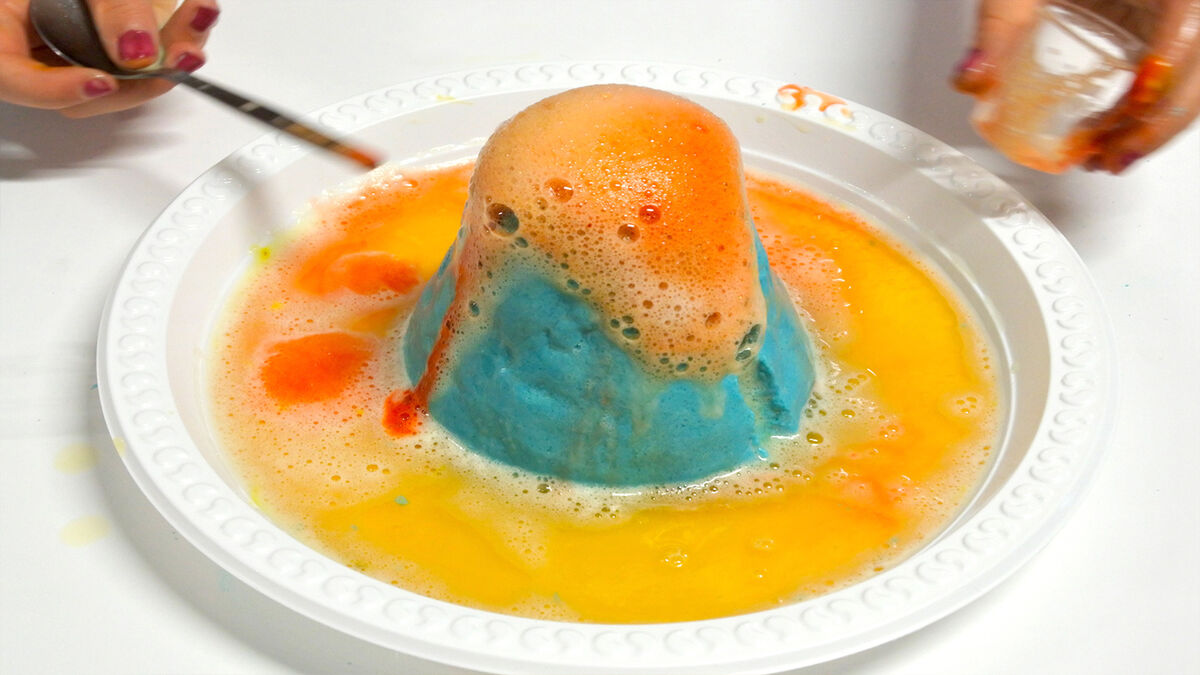
You may think of huge explosions or smoking test tubes when you hear the term chemical reaction. But in reality, chemical reactions can be subtle, simple, and everywhere around you! Keep reading to find examples of simple chemical reactions that happen every day.
Examples of Simple Chemical Reactions
A chemical reaction occurs when a chemical or chemicals (the reactants) convert into another substance (the product). These reactions happen during cooking, cleaning, driving, and processes occurring inside your body, among others. There are four main types of chemical reactions: synthesis, decomposition, single replacement, and double replacement.
Examples of Synthesis Chemical Reactions
Synthesis means that two elements combine to make something new. In a synthesis reaction, also known as a direct combination reaction, two chemicals (A and B) make a new substance (AB). Some examples of simple synthesis reactions include:
- hydrogen + oxygen ---> water
- iron + oxygen ---> rust
- potassium and chlorine gas ---> chloride
- lime + carbon dioxide ---> calcium carbonate (used to strengthen masonry)
- water + carbon dioxide + light ---> glucose and oxygen (photosynthesis)
- sodium + chloride ---> sodium chloride (table salt)

Combustion reactions are often included in lists of synthetic reactions. Combustion occurs when a chemical combines with oxygen. The product is usually fire or another type of heat.
Examples of Decomposition Chemical Reactions
When one chemical reacts to a stimulus by breaking into two simpler elements (AB into A and B), that’s a decomposition reaction. Decomposition chemical reactions are the opposite of synthesis reactions. You’ll find decomposition reactions in the following processes:
- water ---> hydrogen and water (electrolysis)
- carbonic acid ---> carbon dioxide and water (when a soft drink loses its bubbles)
- food ---> proteins and carbohydrates (digestion process)
- silver chloride ---> silver and chlorine
- metal chlorate ---> metal chloride and water
- mercuric oxide ---> mercury metal and oxygen
- ammonium nitrate ---> water and dinitrogen oxide (laughing gas)
There are three ways to break down chemicals into simpler substances. Thermal decomposition breaks the chemical down with heat, while electrolytic decomposition uses electricity to break the bonds. Photo decomposition occurs when a complex chemical is exposed to photons from light.
Examples of Single Replacement Chemical Reactions
Sometimes a chemical reaction takes an element away from a compound and adds it to another substance (A + BC = B and AC). That’s known as a single replacement chemical reaction, and it results in a brand new product. Here are some examples of single replacement reactions:
- zinc + hydrochloric acid ---> zinc chloride and hydrogen gas
- zinc + silver nitrate ---> zinc nitrate and silver metal
- calcium + water ---> calcium hydroxide and dihydrogen
- iron + copper nitrate ---> iron nitrate and copper metal
- bromine + potassium iodide ---> potassium bromine and iodine
Metals combined with acids are almost always single replacement chemical reactions. When they react, the metal takes one element from the acid, leaving a single element behind. Reactive metals such as lithium, potassium, and sodium all have strong reactions to water, while less reactive metals may not react as dramatically.

Examples of Double Replacement Chemical Reactions
Think of double replacement chemical reactions, or metathesis reactions, like a chemical trade. When you have two complex reactants (AB and CD) that swap chemicals during a reaction, you get two new products (AC and BD). Keep reading for examples of double replacement reactions.
- iron sulfide + hydrogen chloride ---> iron chloride and hydrogen sulfide (poisonous gas)
- lead nitrate + potassium iodide ---> lead iodide and potassium nitrate (saltpeter)
- sodium bicarbonate (baking soda) + vinegar ---> carbonic acid and sodium acetate
- sulfuric acid + barium hydroxide ---> barium sulfate and water
- silver nitrate + sodium chloride ---> silver chloride and sodium nitrate
You can also cause a double replacement chemical reaction when you combine an acid and a base. Reactions that use an acid and a base as reactants is known as a neutralization reaction. They don’t cancel each other out, but they create completely new products just like other double replacement reactions.
React to Chemistry
Chemical reactions depend on the reactants and conditions of combination. But many chemical reactions are started or accelerated by chemical catalysts. If you’d like to learn more about catalysts, check out an informative article that includes examples of common chemical catalysts.